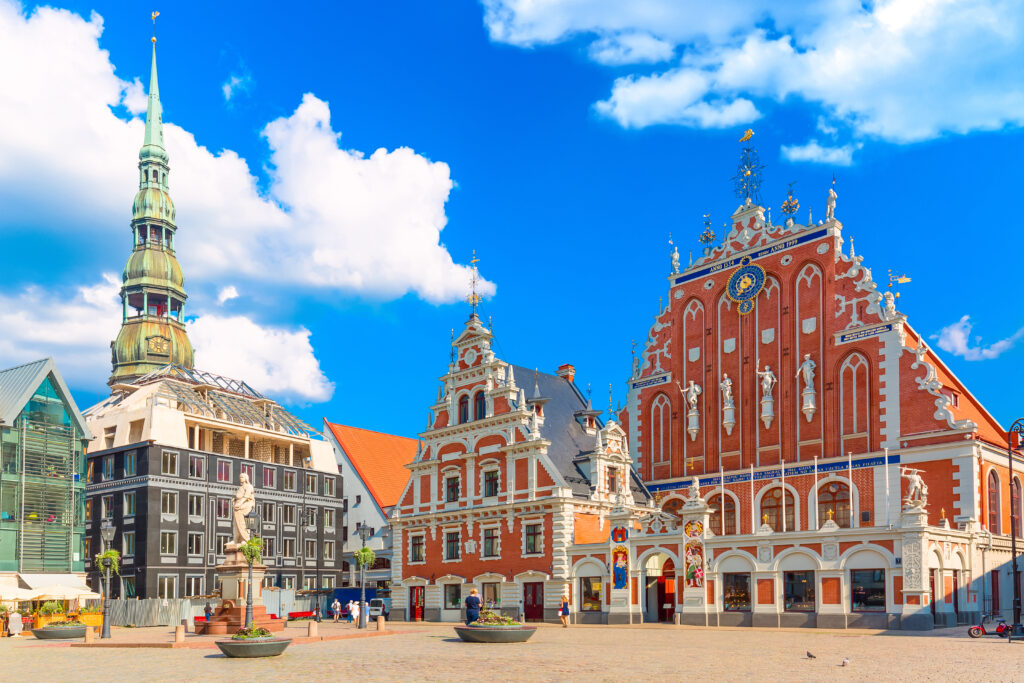
Latvia's capital, Riga, is a charming city to escape to for a short break or even a longer vacation (it's a destination with a change of scenery that doesn't require a passport!) It's home to a beautiful architectural heritage, markets to stroll around, and the fact that it's on a human scale adds to the desire to explore every nook and cranny ofa city that's still little-known, but definitely worth a visit. It's also a green city, where the many parks surrounding the old town offer lovely places to rest and daydream. Proof that Riga deserves to be one of Europe's must-see destinations, the city was named European Capital of Culture in 2014. And for those who didn't have the chance to discover it then, it's never too late.
1. Visit Riga's central market

Visitors to the Maskavas Fortate district will discover a very special atmosphere. This is not only the part of the city where you can see the old wooden buildings from the early 20th century, but also the district that attracts thousands of people every day to stroll the aisles of Riga's Central Market. Housed in three former zeppelin hangars built before the First World War, locals and tourists alike gather here to buy Latvian rye bread, local dairy products or Latvian eel. This colorful, Soviet-style market is a must for those interested in local gastronomy, all at very good prices.
2. What to do in Riga Walk past the Liberty Monument
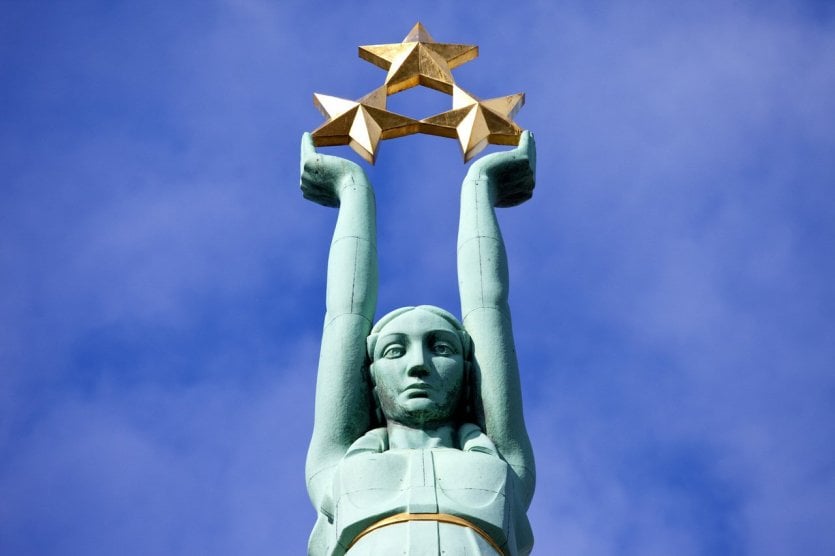
Anyone interested in Riga's history must pass by the Freedom Monument, a memorial erected to honor the soldiers who died fighting in the Latvian War of Independence. Inaugurated on November 18, 1935, it is regarded by locals as a powerful symbol of Latvian independence, freedom and sovereignty. The memorial is one of the tallest of its kind in Europe, and today the square surrounding it is often the site of official ceremonies and public celebrations. Designed by Latvian sculptor Karlis Zale, it is affectionately known by locals as "Milda".
3. See the House of the Black Heads on Ratslaukums Square
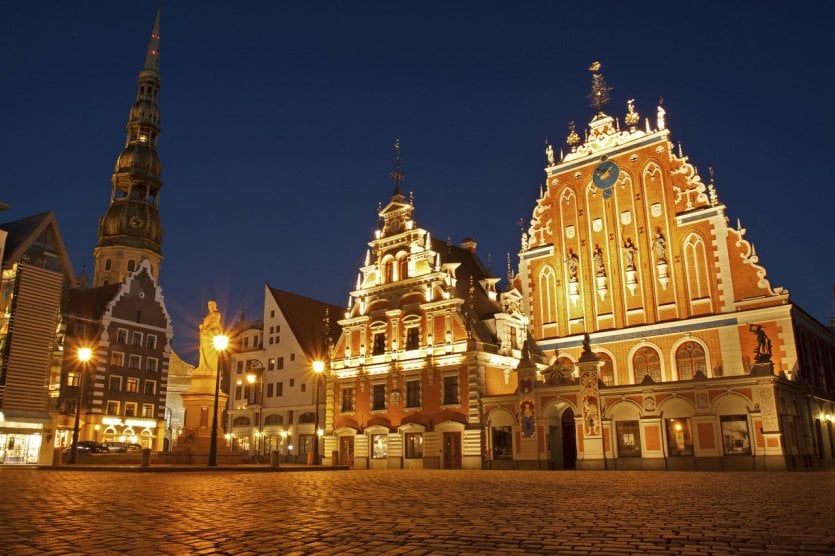
The House of the Black Heads is the monument that inevitably catches the eye when you reach Riga ' s Ratslaukums square . While the building's architecture has been altered many times over the course of history, the current façade is a reconstruction of its 16th-century appearance, when the red bricks, rooms and ornamentation were symbolic of a late Flemish and Dutch Renaissance style. It was destroyed in a bombing raid during the Second World War, but the vaulted basement is still original. Nevertheless, even though it has only recently been renovated, it remains one of the city's most elegant monuments. Click here to book your ticket for the Maison des têtes noires.
4. What to do in Riga The National Library of Latvia
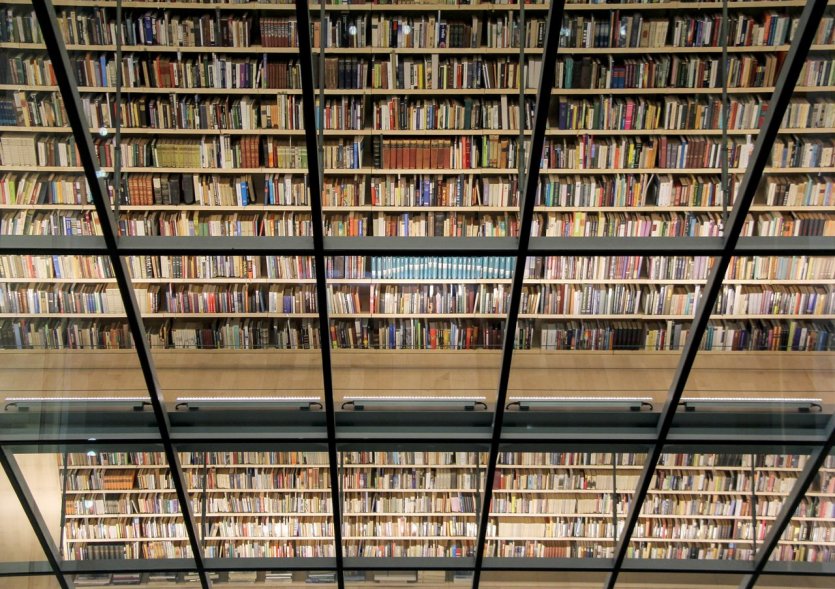
Architecture lovers won't want to miss one of Riga's most interesting and controversial monuments: the National Library of Latvia. It stands on the riverbank in the Pardauvaga district. The idea for a new building to house the library was born in 2008, and construction was completed in 2014, the year in which Riga was designated European Capital of Culture. The work of Latvian architect Gunnar Bikerts, its contemporary appearance is reminiscent of a mountain. Once you've taken the time to contemplate the monument, don't hesitate to head inside to discover its extensive book collection and reach the 7th floor, which offers an exceptional panorama of the river and part of the city.
5. What to do in Riga Admire Riga Cathedral
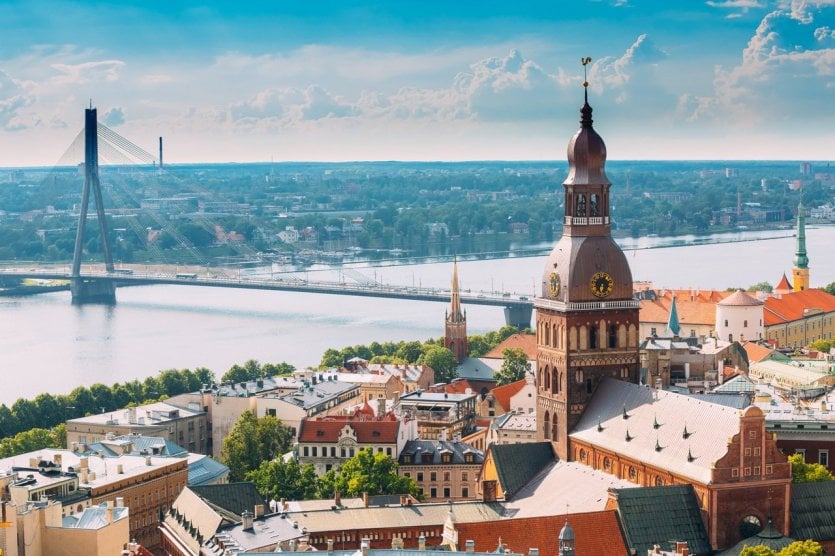
Riga Cathedral is a superb monument dating back to 1211. It is also one of the most imposing cathedrals in the Baltic States, and took several million bricks to build. It stands in stark contrast to the Lutheran churches of Latvia's capital. History has given it several architectural styles, as the Romanesque has been embellished over time with elements of Gothic, Neo-Gothic and Art Nouveau. Take time to admire the exceptional cloister, the rare stained glass windows and the Dome, the largest religious building in the Baltic States. It is particularly renowned for its impressive organ, comprising 6,768 wooden and metal pipes.
6. Stroll through the Kalnciema market
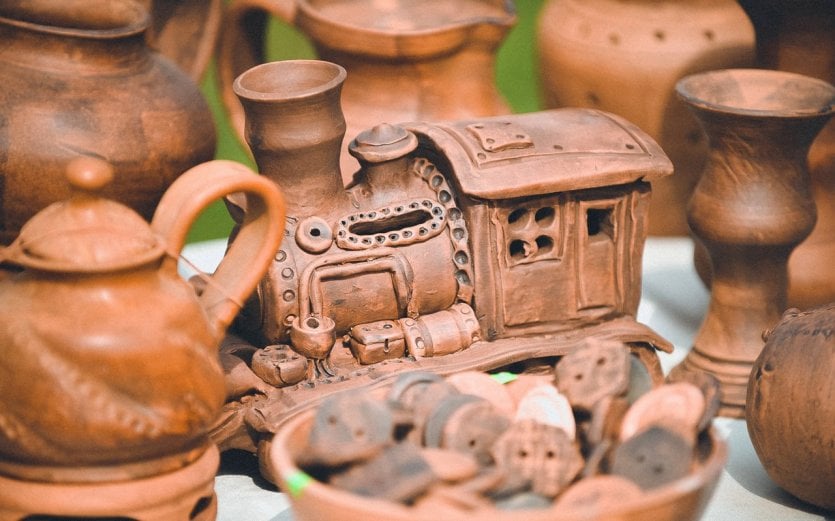
The Kalnciema market may be smaller than the central market, but it's still one of the city's must-sees. It's the perfect opportunity to visit Riga's bohemian quarter, home to charming 19th-century wooden houses. The market takes place every Saturday morning and delights gourmets in search of quality local produce. There's also a wide range of handicrafts on offer. It's the perfect place to stock up on Latvian products, and there's plenty to chat about in the friendly atmosphere. The market also regularly hosts cultural events and culinary workshops.
7. What to do in Riga Get lost in the old town
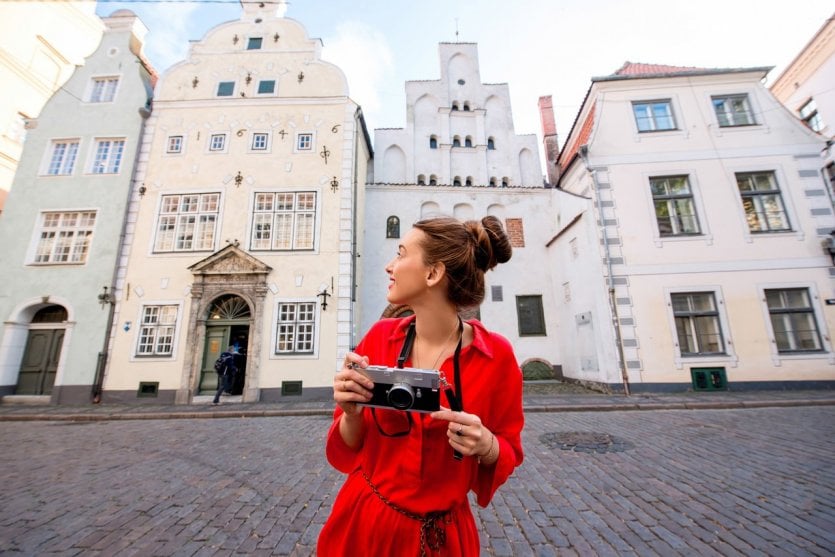
Strolling through the Old Town is a feast for the eyes. Along the narrow cobbled streets, you'll see some of the city's oldest buildings, including some splendid houses built between the 16th and 18th centuries. You'll pass through Dome Square, then Livu Square, before sitting down at a restaurant table. Latvian gastronomy is indeed succulent, and it would be a shame to miss out on the best sweet and savoury specialities. The Old Town is a jewel in Riga's crown and a UNESCO World Heritage Site. We recommend that you book a guided walking tour of Riga's Old Town.
8. Climb to the top of St. Peter's Church

St. Peter's Church, originally built in the 13th century, is one of the oldest monuments in the Baltic States, and its tower is the highest point in Riga. The spire rises to a height of 123.50 meters. Since its foundation, the tower has endured the ravages of climate, wind and lightning, as well as those of history when it collapsed under artillery fire during the Second World War. A replica of the building was completed in 1973, however, and today visitors can take an elevator to the top for a superb panoramic view of the old town.
9. What to do in Riga Stroll through the Museum of Navigation History
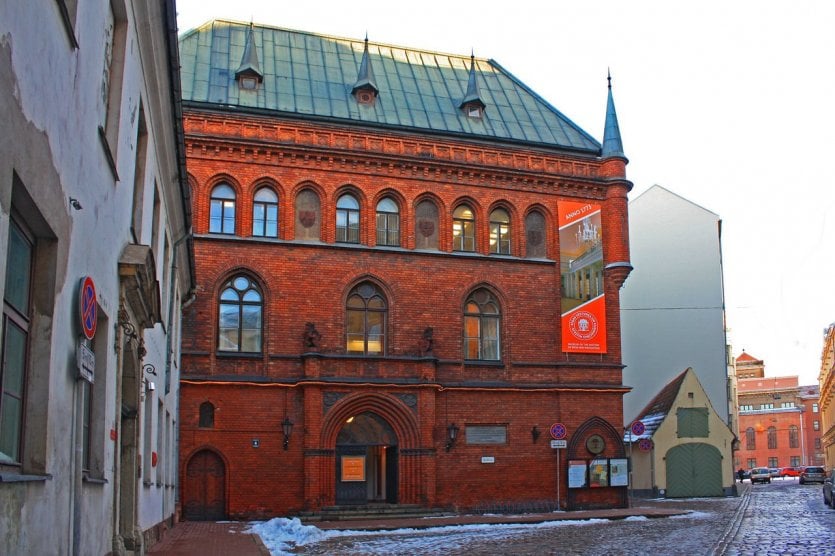
This museum, inaugurated in 1773, is housed within the walls of the Dome Church in the heart of Old Riga. Take a stroll and learn more about the city's history and Latvian shipping. The collection includes over half a million objects! On several floors, you'll discover the history of the Riga region, from prehistory to village life in the 12th century, then successive wars, ending with the country's independence and life in the 20th century. The port of Riga also has a rich history, with ship plans and models recounting the important voyages made by Latvian navigators over the years. A fine museum for history buffs.
10. Contemplating Art Nouveau buildings

Riga is renowned for its splendid Art Nouveau architecture. A third of the city's monuments are in this style, making it one of the world's largest concentrations of Art Nouveau structures. To better understand why, it's worth noting that Riga was in the midst of a financial boom at the same time as Art Nouveau was itself booming. Art Nouveau monuments can be found in every district of the city, not least in the unmissable Rue Albert. And to better understand how Riga saw the style take hold, you can stop off at the fascinating Museum of Art Nouveau. Discover this rich heritage by booking this tour of the Art Nouveau district, where you'll discover many of architect Mikhail Eisenstein's creations.
11. Visit the Riga Museum of Art Nouveau
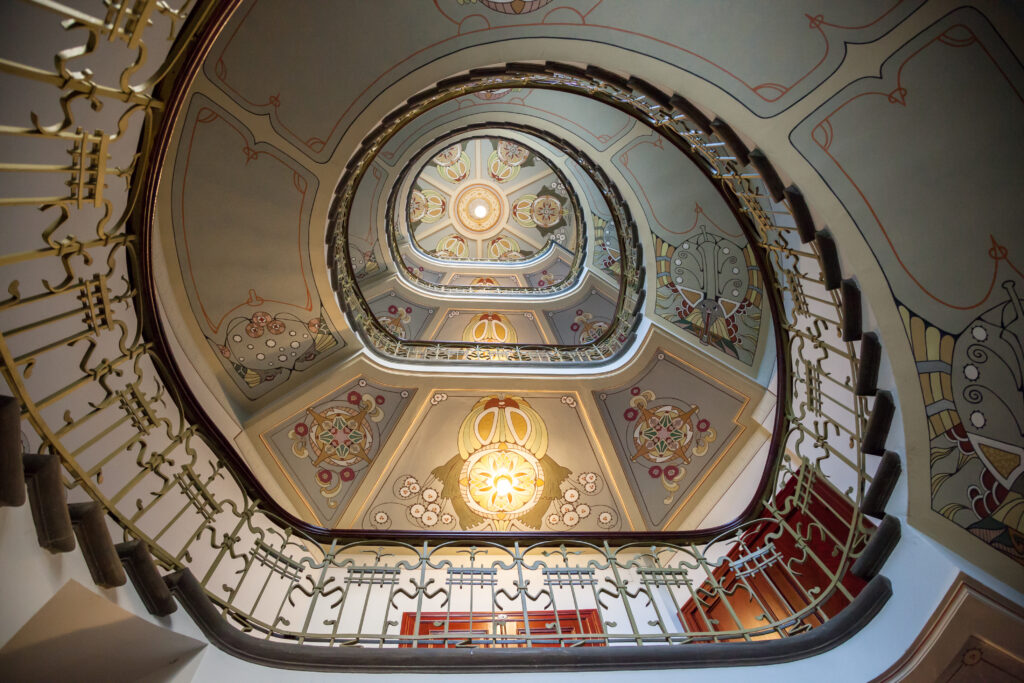
If you're interested in Art Nouveau, don't miss this museum housed in the former apartment of Latvian architect Konstantīns Pēkšēns, who was responsible for over 250 buildings in the city. The museum recreates a middle-class apartment from the 1920s. You'll see ladies in period costume reading, sewing or cooking, amidst the furniture, ceramics, fabrics and objects of the period.
12. Take a tour of the Riga Automobile Museum
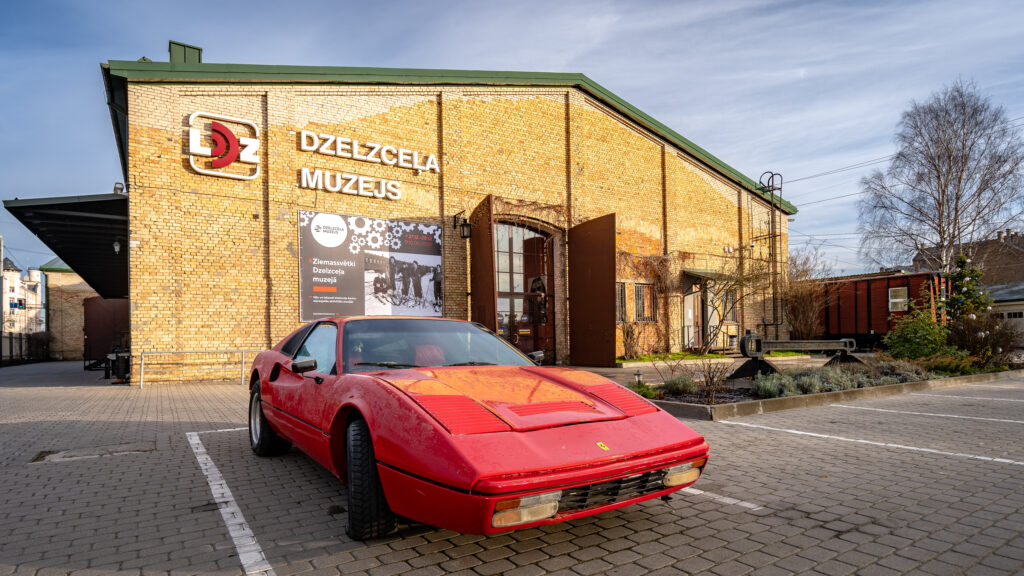
This museum boasts an astonishing collection well worth a visit. It includes automobiles that belonged to Gorky, Stalin, Khrushchev and Brezhnev. Stalin's dummy has been placed in his 6005 cc armored limousine, while Brezhnev sits at the wheel of his Rolls-Royce, which was involved in a collision. Other items in the collection, such as a Daimler, a Cadillac, Gorky's 1934 Lincoln and a 1942 Harley-Davidson motorcycle, will appeal to all mechanical enthusiasts!
13. Try Latvia's culinary specialties
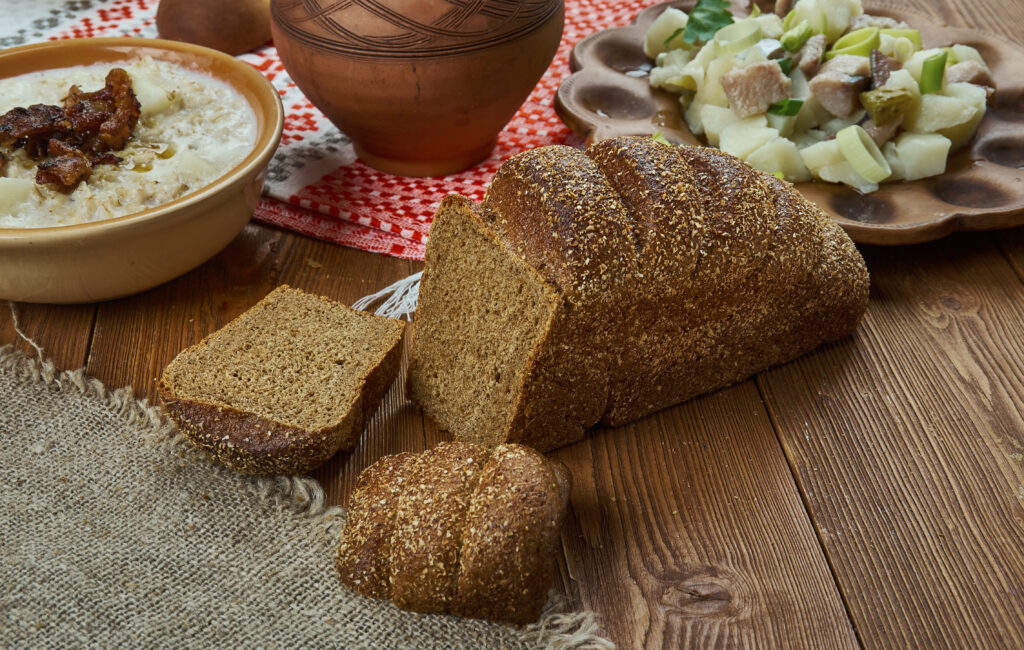
Latvians place great importance on using fresh, local ingredients, and this is reflected in their signature dishes. Among them, "Sklandrauši", a deliciously sweet dessert made with carrots and apples, offers a unique taste encounter. Fish lovers will be delighted by "Siļķe ar biezpienu", a dish based on marinated herring accompanied by cottage cheese. Not forgetting the famous "Rupjmaize", a dense, flavorful rye bread, often served with fresh butter. Enjoy your meal!
Where to stay in Riga?
Riga offers a variety of accommodation options to suit everyone's preferences and budgets. If you want to be right in the heart of the action, staying in the Old Town (Vecrīga) is ideal. You'll be surrounded by picturesque medieval architecture, restaurants, stores and sights. However, it can be more lively and noisy. Downtown Riga also offers a variety of accommodation, from luxury hotels to more affordable options. It's an excellent choice if you're looking for a balance between accessibility to the main attractions and a quieter environment than the Old Town. If you're passionate about Art Nouveau architecture, consider staying in the area surrounding Albert Street (Alberta iela). Here you'll find elegant and charming hotels in buildings characteristic of the period.
Here are our 3 favorite accommodations in Riga:
- The cutest: Hotel Neiburgs
Housed in a magnificent Art Nouveau building with a beautifully sculpted facade, right in the heart of the old town, the Neiburgs is a little gem of a hotel that you can book right here. It even features on the Old Rīga tourist circuit, as it is a listed historic monument!
- The friendliest: the Naughty Squirrel youth hostel
Just 300 m from the train station and right in Rīga's historic center, the Naughty Squirrel youth hostel is reputed to be one of the city's best. The owners, originally from Australia and Latvia, have succeeded in creating a friendly atmosphere, and travelers from all over the world stay here. Book your stay here !
- Best value for money: the Dodo hotel
Just a 20-minute walk from the city center, the Dodo hotel boasts the best value in town. If he's wrong, he's not far from the truth! It's a great deal for a nomadic worker's holiday, as you'll have everything you need on site without breaking the bank. Click here to book your room.
What to see in Riga in 1 day
Whatever the time of year you visit Riga (although we'd recommend the All Saints' vacation or the month of October !) a well-planned day trip can offer a captivating insight into its history, culture and unique architectural charm. Here's a suggested itinerary for a day in Riga:
- Morning: Old Riga (Vecrīga). Start your day exploring the Old Town, a UNESCO World Heritage Site. Admire the medieval architecture and visit Riga Cathedral, which offers a breathtaking view of the city from its tower. Stroll through the cobbled streets to discover the charming atmosphere of this historic district.
- Half-day: Town Hall Square and Black Head House. Head to Place de l'Hôtel de Ville, in the heart of the old town. Explore the Maison des Têtes Noires, a landmark building dating back to the 14th century, and discover its fascinating history. Enjoy lunch in one of the many picturesque cafés nearby.
- Afternoon: Museum of the Occupation of Latvia and Bastejkalns Park. Immerse yourself in Latvia's recent history by visiting the Museum of Occupation, which traces the period of Soviet and Nazi occupation. Afterwards, stroll through Bastejkalns Park, where you can enjoy the peaceful nature in the heart of the city.
- Late afternoon: Art Nouveau and the Opera Quarter. Riga is renowned for its Art Nouveau architecture. Explore the district around Alberta iela to admire the elegant facades. Then head to the Opera Quarter to see the majestic building of the Latvian National Opera.
- Evening: Dinner on the banks of the Daugava. End your day with dinner in one of the restaurants along the banks of the Daugava. Enjoy the view of the river and Riga's illuminated cityscape.
How to visit Riga in 3 days?
With two extra days in Riga, you can deepen your exploration of the city and discover iconic sites nearby. Here's how to extend your itinerary over three days:
Day 2:
- Morning: Riga Central Market and Spīķeri Quarter. Start your second day with a visit to Riga's Central Market, one of Europe's largest, where you can sample local produce, fresh seafood and Latvian specialties. Afterwards, explore the Spīķeri district, characterized by its renovated warehouses and artistic ambience.
- Half-day: Latvian National Museum of Fine Arts. Continue to the Latvian National Museum of Fine Arts for an immersion in Latvian and international art. With a vast collection, the museum offers a glimpse of Latvia's artistic evolution over the centuries.
- Afternoon: Seaside stroll in Jurmala. Take a short excursion to Jurmala, a picturesque seaside resort about 30 minutes by train from Riga. Enjoy the beach, explore the charming wooded streets and relax in the region's renowned spas.
Day 3:
- Morning: Visit to the Citadel Quarter and the Liberty Monument. Explore the Citadel district, where you'll find the Latvian Parliament and the Freedom Monument. The monument is a national symbol and offers a panoramic view of the city from its summit.
- Half-day: Kipsala district and Riga Museum of Foreign Art. Cross the bridge to the Kipsala district to discover the interesting architecture and the Riga Museum of Foreign Art, housing a collection of works by foreign artists from the 16th to the 20th century.
- Afternoon: Kalnciems district and dinner at Brasserie Valmiermuiža. Round off your visit by exploring the Kalnciems district, famous for its craft market. Afterwards, head to Brasserie Valmiermuiža to sample local craft beers and enjoy dinner in a convivial atmosphere.
With these additions, you'll have the opportunity to discover even more of the cultural, artistic and natural facets of Riga and its surroundings.
Still not convinced? Latvia is one of our top 10 budget destinations in Europe, so don't hesitate any longer!


